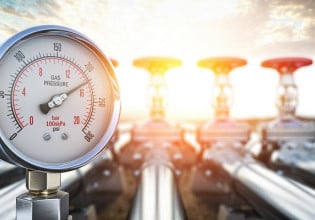W
Hello,
i am a student and currently doing an experiment on p-only controller for the flow control system. so i came across a few result. The experiment is done by using multiple PB(P)% value, which is 999%(max), 200%, and 100% . This will gives Kc(gain) value of nearly zero gain, 0.5 gain and 1 gain. the controller used is yokogawa controller using DCS (yokogawa CENTUM CS 3000 R3). and the plant is solteq model: se 113 experimental stand for ratio control. here I'll also upload the result.
so the question is, is my result correct? based on theory my results seem so wrong. the response never stabilize. it always under constant cycling for the PB value of 200% and 100%. theoretically the response will stable but with an offset for proportional control so i hoping some of you can help me...tq..
pb999 ->http://oi68.tinypic.com/2mhu8wg.jpg
pb200 ->http://oi65.tinypic.com/2r6cjs9.jpg
pb100 ->http://oi68.tinypic.com/2lv1oa9.jpg
i am a student and currently doing an experiment on p-only controller for the flow control system. so i came across a few result. The experiment is done by using multiple PB(P)% value, which is 999%(max), 200%, and 100% . This will gives Kc(gain) value of nearly zero gain, 0.5 gain and 1 gain. the controller used is yokogawa controller using DCS (yokogawa CENTUM CS 3000 R3). and the plant is solteq model: se 113 experimental stand for ratio control. here I'll also upload the result.
so the question is, is my result correct? based on theory my results seem so wrong. the response never stabilize. it always under constant cycling for the PB value of 200% and 100%. theoretically the response will stable but with an offset for proportional control so i hoping some of you can help me...tq..
pb999 ->http://oi68.tinypic.com/2mhu8wg.jpg
pb200 ->http://oi65.tinypic.com/2r6cjs9.jpg
pb100 ->http://oi68.tinypic.com/2lv1oa9.jpg






